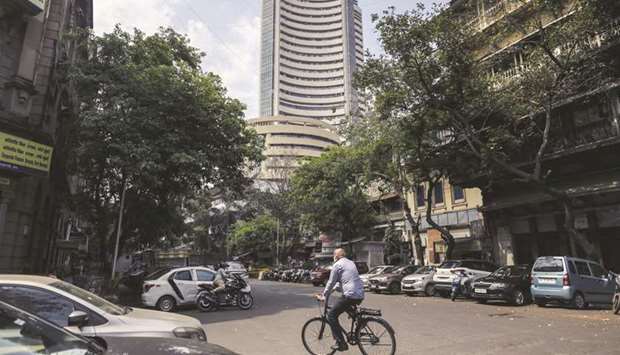Stocks in Asia’s third-largest economy jumped the most in almost two weeks after Prime Minister Narendra Modi on Tuesday said his government will spend a total of Rs20tn ($265bn) to help India weather the fallout of the coronavirus pandemic.
The S&P BSE Sensex index gained 2% to 32,008.6 points at the close in Mumbai yesterday. The Nifty 50 also rose 2%. The package amounts to 10% of India’s gross domestic product, Modi said in a televised address to the nation, without giving details.
“The fiscal spending package could very well reset the tone of the market,” said Amit Khurana, head of equities at Dolat Capital Market Pvt in Mumbai, “A lot will depend on the details as they emerge over the next few days, including how much is fresh stimulus.”
Before Tuesday’s announcement, the government had committed less than 1% of GDP, lower than many major economies, to contain the damage from the pandemic, even as economic data deteriorated and infections increased in an already fragile economy. The new package will amount to 5%-plus of GDP and part of that could be restatement of the existing plans, Jefferies Financial Group Inc’s Mahesh Nandurkar wrote in a note on Tuesday.
Barclays Plc estimates that Rs9tn of measures have already been undertaken and there’s space for another Rs10.7tn of spending or support. Additional borrowing and the recent increase in fuel tax has opened up room for the government to spend close to Rs1.9tn after factoring in the loss in revenue, it said.
Sovereign bonds reversed losses as traders hoped the central bank will step in to support the debt market and that a big chunk of the stimulus may not lead to direct cash outgo. The 6.45% 2029 note yield fell as much as eight basis points to 6.08%, after rising 12 basis points earlier. Yields rose by the most in three years on Monday after the government announced a 54% jump in federal borrowing.
“The market seems extremely confident of substantial RBI intervention,” said Naveen Singh, head of fixed income at ICICI Securities Primary Dealership Ltd. “Whether RBI overwhelms or underwhelms in their response is yet to be seen.” A major part of the fiscal package may be in the form of loan guarantees and equity infusion that won’t require direct spending, according to Edelweiss Securities.
The Reserve Bank of India has since March injected more than $50bn into Asia’s third-largest economy, or more than 3.2% of GDP, while Finance Minister Nirmala Sitharaman had offered $22.5bn of aid on March 26.
“Markets are keenly looking forward to details of financing package, and there’s a thinking that additional burden may not be that huge,” said Anoop Verma, vice president for treasury at DCB Bank Ltd. “There’s a belief that excess banking system liquidity and the RBI will support the market.”
Meanwhile the rupee gained sharply against the US dollar but later could not hold on to most of the gains amid weak global risk sentiment. The rupee yesterday rose to 75.27 per US dollar at day’s high before surrendering most of the gains. In comparison, the rupee had closed at 75.50 per USD in the previous session. During yesterday’s session, the rupee traded in the range of 75.27 to 75.50 per US dollar. The rupee settled at 75.46 per US dollar.
The domestic sentiment was positive after Prime Minister Narendra Modi on Tuesday said the government would provide Rs20 lakh crore in fiscal and monetary measures to support an economy battered by a sweeping weeks-long lockdown to fight the novel coronavirus. The equity markets also rose sharply gave later gave up some gains. Most Asian currencies were subdued yesterday ahead of a speech by US Federal Reserve chairman Jerome Powell, while investors worried that a rebound in global coronavirus infections would delay economic recovery.
Financial markets gave up recent gains after a top US infectious disease expert warned overnight that a premature lifting of restrictions could lead to additional outbreaks of the novel coronavirus.
Including the recent measures announced by the Reserve Bank and the government, the PM Modi said the finance minister over the course of next few days would outline a stimulus package of Rs20 lakh crore or equivalent to 10% of GDP. “Though a part of it would involve putting money directly in the hands of poor, a large part of it is expected to be contingent in nature, for example credit guarantee fund for SMEs and MSMEs. Such a support would be leveraged and would entail a lower actual cash outlay,” said Abhishek Goenka, founder and CEO of IFA Global.
Domestic bond yields spiked up but later retreated, awaiting details of the stimulus package.
The supply of bonds would be too huge for the markets to absorb and the RBI would have to monetise a significant portion of it, say analysts.

A cyclist rides along a near-empty road near the Bombay Stock Exchange building in Mumbai. The Sensex index gained 2% to 32,008.6 points at the close yesterday.


